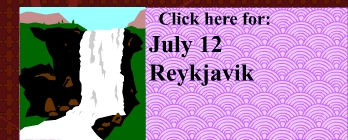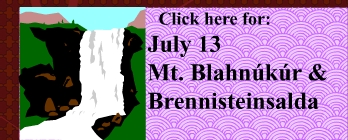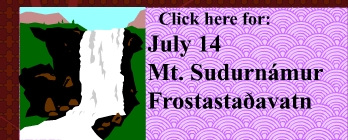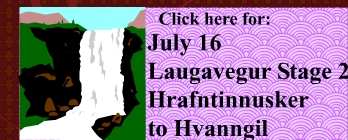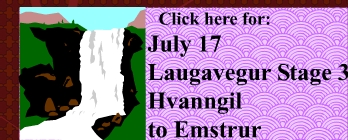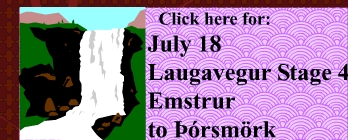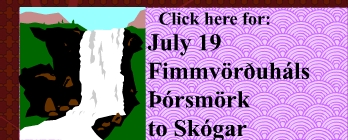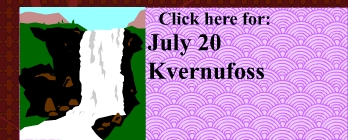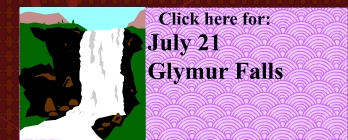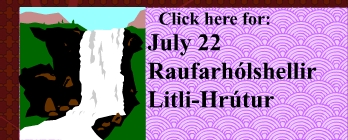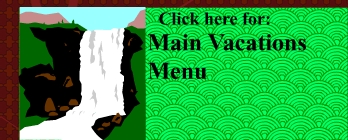

Because of the race to ١rsm÷rk, we got an uncharacteristically late start. But the distance to Hrafntinnusker is just 10 Km from Landmannalauger. Fortunately, we had ideal weather, and the hiking was easy. We enjoyed the astonishing scenery in all directions.
Look at this astonishing photograph taken by a NASA Landsat satellite. It shows that the trek from Landmannalauger to Hrafntinnusker is actually a trek across an enormous caldera called Torfaj÷kull. Torfaj÷kull last erupted in 1477, at the time the crater was covered by a glacier, so it was a sub-glacial volcano. Torfaj÷kull is notable among Icelandĺs volcanoes for discharging relatively rare rhyolitic lava, which is rich in silica. The high silica content gives the resulting rock its light color. (In contrast, silica-poor mafic lavas produce dark rocks.)

On the second stage of the Laugavegur, we descended a long distance down to the ┴lftavatn valley. We were actually climbing down the outer rim of the Torfaj÷kull caldera. No wonder we saw so much geothermal activity at the beginning of our trek, the caldera must still have some heat left in it.
Anthony had identified a couple of side trips that we could make from Hrafntinnusker if the weather cooperated. The first was a climb up nearby Mt. St÷ull - we enjoyed 360 degrees at the top, surrounded by rhyolite mountains, patches of snow and obsidian plains. We were at the center of the Torfaj÷kull caldera, everywhere we looked was once part of volcanic crater that erupted beneath a glacial ice cap.
Our second side trip was to ═shellar ("═s" is Icelandic for ice, and "hellar" is Icelandic for caves, so I don't think the ice cave has an actual name). The hot fumaroles from the caldera eroded a large ice sheet from below, carving out a cavern in the ice. When we visited in 2023, the ice cave had already collapsed, but it was still impressive to see.
The H÷skuldsskßli hut at Hrafntinnusker is near the highest point of the Laugavegur trail. It is noticeably colder (and windier) here compared to Landmannalauger. Also, the hut does not have showers. So it is understandable that many hikers combine stage 1 and stage 2 into a long day, and go all the way to ┴lftavatn. But because we stopped at the hut, we were able to enjoy the side trips and see more of the amazing landscape. I was glad we stayed for one night, though I would not recommend camping where it is so cold and windy. Yes, the huts are more expensive than the camping option, but being indoors was worth it to me. I was surprised that the hut was not completely full, I thought during the high season that all possible bunks in the hut would have been booked.






















































